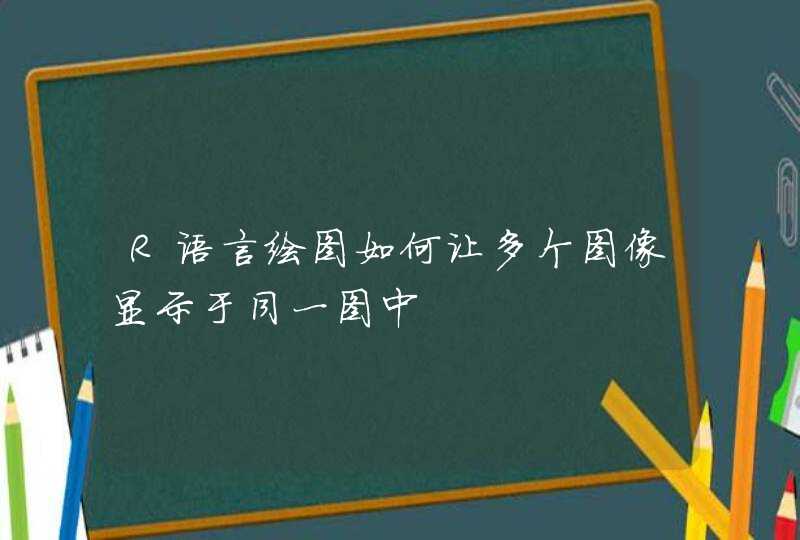
filename3=str(number)+'n3'+'.jpg' #打印第number张图片+增值方式+保存类型
cv2.imwrite(savedpath + filename3, img_left)
"""
# 数据增强实现
"""
import cv2
import numpy as np
import os
# 图像平移
def img_translation(image):
# 图像平移 下、上、右、左平移
M = np.float32([[1, 0, 0], [0, 1, 100]])
img_down = cv2.warpAffine(image, M, (image.shape[1], image.shape[0]))
M = np.float32([[1, 0, 0], [0, 1, -100]])
img_up = cv2.warpAffine(image, M, (image.shape[1], image.shape[0]))
M = np.float32([[1, 0, 100], [0, 1, 0]])
img_right = cv2.warpAffine(image, M, (image.shape[1], image.shape[0]))
M = np.float32([[1, 0, -100], [0, 1, 0]])
img_left = cv2.warpAffine(image, M, (image.shape[1], image.shape[0]))
# 保存图片,需要保存上述的哪一图片,就在cv2.imwrite()中,将哪一图片名放入。
# filename='xxx' +'.jpeg'
# cv2.imwrite(savedpath + filename, img_left)
# 显示图形
cv2.imshow("down", img_down)
filename0=str(number)+'n0'+'.jpg'
cv2.imwrite(savedpath + filename0, img_down)
cv2.imshow("up", img_up)
filename1=str(number)+'n1'+'.jpg'
cv2.imwrite(savedpath + filename1, img_up)
cv2.imshow("right", img_right)
filename2=str(number)+'n2'+'.jpg'
cv2.imwrite(savedpath + filename2, img_right)
cv2.imshow("left", img_left)
filename3=str(number)+'n3'+'.jpg'
cv2.imwrite(savedpath + filename3, img_left)
# 图像缩放
def img_scale(image):
result = cv2.resize(image, (224, 224))
cv2.imshow("scale", result)
filename=str(number)+'n5'+'.jpg'
cv2.imwrite(savedpath + filename, result)
# 图像翻转
def img_flip(image):
# 0以X轴为对称轴翻转,>0以Y轴为对称轴翻转, <0X轴Y轴翻转
horizontally = cv2.flip(image, 0) # 水平镜像
vertically = cv2.flip(image, 1) # 垂直镜像
hv = cv2.flip(image, -1) # 水平垂直镜像
# 显示图形
cv2.imshow("Horizontally", horizontally)
filename1=str(number)+'n6'+'.jpg'
cv2.imwrite(savedpath + filename1, horizontally)
cv2.imshow("Vertically", vertically)
filename2=str(number)+'n7'+'.jpg'
cv2.imwrite(savedpath + filename2, vertically)
cv2.imshow("Horizontally &Vertically", hv)
filename3=str(number)+'n8'+'.jpg'
cv2.imwrite(savedpath + filename3, hv)
# 图像旋转
def img_rotation(image):
# 原图的高、宽 以及通道数
rows, cols, channel = image.shape
# 绕图像的中心旋转
# 参数:旋转中心 旋转度数 scale
M = cv2.getRotationMatrix2D((cols / 2, rows / 2), 30, 1)
# 参数:原始图像 旋转参数 元素图像宽高
rotated = cv2.warpAffine(image, M, (cols, rows))
# 显示图像
cv2.imshow("rotated", rotated)
filename1=str(number)+'n9'+'.jpg'
cv2.imwrite(savedpath + filename1, rotated)
#选装60度
W = cv2.getRotationMatrix2D((cols / 2, rows / 2), 60, 1)
# 参数:原始图像 旋转参数 元素图像宽高
rotated1 = cv2.warpAffine(image, W, (cols, rows))
cv2.imshow("rotated", rotated)
filename2=str(number)+'n12'+'.jpg'
cv2.imwrite(savedpath + filename2, rotated1)
#选装145度
W = cv2.getRotationMatrix2D((cols / 2, rows / 2), 60, 1)
# 参数:原始图像 旋转参数 元素图像宽高
rotated2 = cv2.warpAffine(image, W, (cols, rows))
cv2.imshow("rotated", rotated)
filename3=str(number)+'n13'+'.jpg'
cv2.imwrite(savedpath + filename3, rotated2)
# 图像加噪
def img_noise(image, mean=0, var=0.001):
'''
添加高斯噪声
mean : 均值
var : 方差
'''
image = np.array(image / 255, dtype=float)
noise = np.random.normal(mean, var ** 0.5, image.shape)
out = image + noise
if out.min() <0:
low_clip = -1.
else:
low_clip = 0.
out = np.clip(out, low_clip, 1.0)
out = np.uint8(out * 255)
cv2.imshow("noise", out)
filename3=str(number)+'n10'+'.jpg'
cv2.imwrite(savedpath + filename3, out)
# 图像亮度调节
def img_brightness(image):
contrast = 1 # 对比度
brightness = 100 # 亮度
pic_turn = cv2.addWeighted(image, contrast, image, 0, brightness)
# cv2.addWeighted(对象,对比度,对象,对比度)
'''cv2.addWeighted()实现的是图像透明度的改变与图像的叠加'''
cv2.imshow('bright', pic_turn) # 显示图片
filename3=str(number)+'n11'+'.jpg'
cv2.imwrite(savedpath + filename3, pic_turn)
if __name__ == '__main__':
i = 0
path = '../Data/'
print(path)
savedpath = './result_new/'
filelist = os.listdir(path)
total_num = len(filelist)
for item in filelist:
number = i + 1
i = number
print("######")
print("打印到第",i,"张图片")
src = cv2.imread(path + item)
img_translation(src)
img_scale(src)
img_flip(src)
img_rotation(src)
img_noise(src)
img_brightness(src)
cv2.waitKey(0)
cv2.destroyAllWindows()
代码较为繁琐,有空之后进行优化
输出结果
如何用python实现图像的一维高斯滤波器现在把卷积模板中的值换一下,不是全1了,换成一组符合高斯分布的数值放在模板里面,比如这时中间的数值最大,往两边走越来越小,构造一个小的高斯包。实现的函数为cv2.GaussianBlur()。对于高斯模板,我们需要制定的是高斯核的高和宽(奇数),沿x与y方向的标准差(如果只给x,y=x,如果都给0,那么函数会自己计算)。高斯核可以有效的出去图像的高斯噪声。当然也可以自己构造高斯核,相关函数:cv2.GaussianKernel().
import cv2
import numpy as np
import matplotlib.pyplot as plt
img = cv2.imread(‘flower.jpg‘,0) #直接读为灰度图像
for i in range(2000): #添加点噪声
temp_x = np.random.randint(0,img.shape[0])
temp_y = np.random.randint(0,img.shape[1])
img[temp_x][temp_y] = 255
blur = cv2.GaussianBlur(img,(5,5),0)
plt.subplot(1,2,1),plt.imshow(img,‘gray‘)#默认彩色,另一种彩色bgr
plt.subplot(1,2,2),plt.imshow(blur,‘gray‘)
import CV2
import copy
import numpy as np
import random
使用的是pycharm
因为最近看了《银翼杀手2049》,里面Joi实在是太好看了所以原图像就用Joi了
要求是灰度图像,所以第一步先把图像转化成灰度图像
# 读入原始图像
img = CV2.imread('joi.jpg')
# 灰度化处理
gray = CV2.cvtColor(img, CV2.COLOR_BGR2GRAY)
CV2.imwrite('img.png', gray)
第一个任务是利用分段函数增强灰度对比,我自己随便写了个函数大致是这样的
def chng(a):
if a <255/3:
b = a/2
elif a <255/3*2:
b = (a-255/3)*2 + 255/6
else:
b = (a-255/3*2)/2 + 255/6 +255/3*2
return b
rows = img.shape[0]
cols = img.shape[1]
cover = copy.deepcopy(gray)
for i in range(rows):
for j in range(cols):
cover[i][j] = chng(cover[i][j])
CV2.imwrite('cover.png', cover)
下一步是直方图均衡化
# histogram equalization
def hist_equal(img, z_max=255):
H, W = img.shape
# S is the total of pixels
S = H * W * 1.
out = img.copy()
sum_h = 0.
for i in range(1, 255):
ind = np.where(img == i)
sum_h += len(img[ind])
z_prime = z_max / S * sum_h
out[ind] = z_prime
out = out.astype(np.uint8)
return out
covereq = hist_equal(cover)
CV2.imwrite('covereq.png', covereq)
在实现滤波之前先添加高斯噪声和椒盐噪声(代码来源于网络)
不知道这个椒盐噪声的名字是谁起的感觉隔壁小孩都馋哭了
用到了random.gauss()
percentage是噪声占比
def GaussianNoise(src,means,sigma,percetage):
NoiseImg=src
NoiseNum=int(percetage*src.shape[0]*src.shape[1])
for i in range(NoiseNum):
randX=random.randint(0,src.shape[0]-1)
randY=random.randint(0,src.shape[1]-1)
NoiseImg[randX, randY]=NoiseImg[randX,randY]+random.gauss(means,sigma)
if NoiseImg[randX, randY]<0:
NoiseImg[randX, randY]=0
elif NoiseImg[randX, randY]>255:
NoiseImg[randX, randY]=255
return NoiseImg
def PepperandSalt(src,percetage):
NoiseImg=src
NoiseNum=int(percetage*src.shape[0]*src.shape[1])
for i in range(NoiseNum):
randX=random.randint(0,src.shape[0]-1)
randY=random.randint(0,src.shape[1]-1)
if random.randint(0,1)<=0.5:
NoiseImg[randX,randY]=0
else:
NoiseImg[randX,randY]=255
return NoiseImg
covereqg = GaussianNoise(covereq, 2, 4, 0.8)
CV2.imwrite('covereqg.png', covereqg)
covereqps = PepperandSalt(covereq, 0.05)
CV2.imwrite('covereqps.png', covereqps)
下面开始均值滤波和中值滤波了
就以n x n为例,均值滤波就是用这n x n个像素点灰度值的平均值代替中心点,而中值就是中位数代替中心点,边界点周围补0;前两个函数的作用是算出这个点的灰度值,后两个是对整张图片进行
#均值滤波模板
def mean_filter(x, y, step, img):
sum_s = 0
for k in range(x-int(step/2), x+int(step/2)+1):
for m in range(y-int(step/2), y+int(step/2)+1):
if k-int(step/2) 0 or k+int(step/2)+1 >img.shape[0]
or m-int(step/2) 0 or m+int(step/2)+1 >img.shape[1]:
sum_s += 0
else:
sum_s += img[k][m] / (step*step)
return sum_s
#中值滤波模板
def median_filter(x, y, step, img):
sum_s=[]
for k in range(x-int(step/2), x+int(step/2)+1):
for m in range(y-int(step/2), y+int(step/2)+1):
if k-int(step/2) 0 or k+int(step/2)+1 >img.shape[0]
or m-int(step/2) 0 or m+int(step/2)+1 >img.shape[1]:
sum_s.append(0)
else:
sum_s.append(img[k][m])
sum_s.sort()
return sum_s[(int(step*step/2)+1)]
def median_filter_go(img, n):
img1 = copy.deepcopy(img)
for i in range(img.shape[0]):
for j in range(img.shape[1]):
img1[i][j] = median_filter(i, j, n, img)
return img1
def mean_filter_go(img, n):
img1 = copy.deepcopy(img)
for i in range(img.shape[0]):
for j in range(img.shape[1]):
img1[i][j] = mean_filter(i, j, n, img)
return img1
完整main代码如下:
if __name__ == "__main__":
# 读入原始图像
img = CV2.imread('joi.jpg')
# 灰度化处理
gray = CV2.cvtColor(img, CV2.COLOR_BGR2GRAY)
CV2.imwrite('img.png', gray)
rows = img.shape[0]
cols = img.shape[1]
cover = copy.deepcopy(gray)
for i in range(rows):
for j in range(cols):
cover[i][j] = chng(cover[i][j])
CV2.imwrite('cover.png', cover)
covereq = hist_equal(cover)
CV2.imwrite('covereq.png', covereq)
covereqg = GaussianNoise(covereq, 2, 4, 0.8)
CV2.imwrite('covereqg.png', covereqg)
covereqps = PepperandSalt(covereq, 0.05)
CV2.imwrite('covereqps.png', covereqps)
meanimg3 = mean_filter_go(covereqps, 3)
CV2.imwrite('medimg3.png', meanimg3)
meanimg5 = mean_filter_go(covereqps, 5)
CV2.imwrite('meanimg5.png', meanimg5)
meanimg7 = mean_filter_go(covereqps, 7)
CV2.imwrite('meanimg7.png', meanimg7)
medimg3 = median_filter_go(covereqg, 3)
CV2.imwrite('medimg3.png', medimg3)
medimg5 = median_filter_go(covereqg, 5)
CV2.imwrite('medimg5.png', medimg5)
medimg7 = median_filter_go(covereqg, 7)
CV2.imwrite('medimg7.png', medimg7)
medimg4 = median_filter_go(covereqps, 7)
CV2.imwrite('medimg4.png', medimg4)





































































